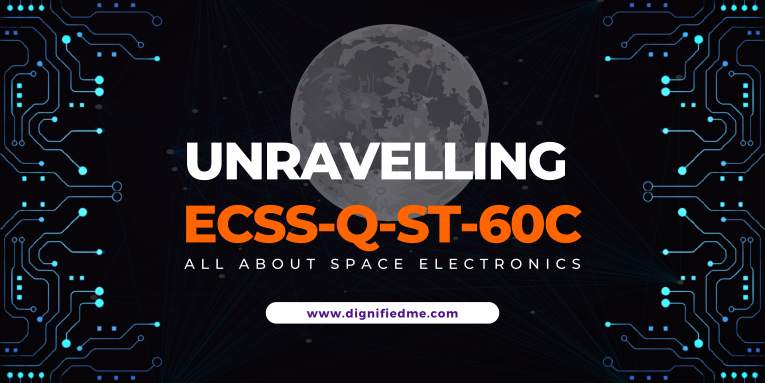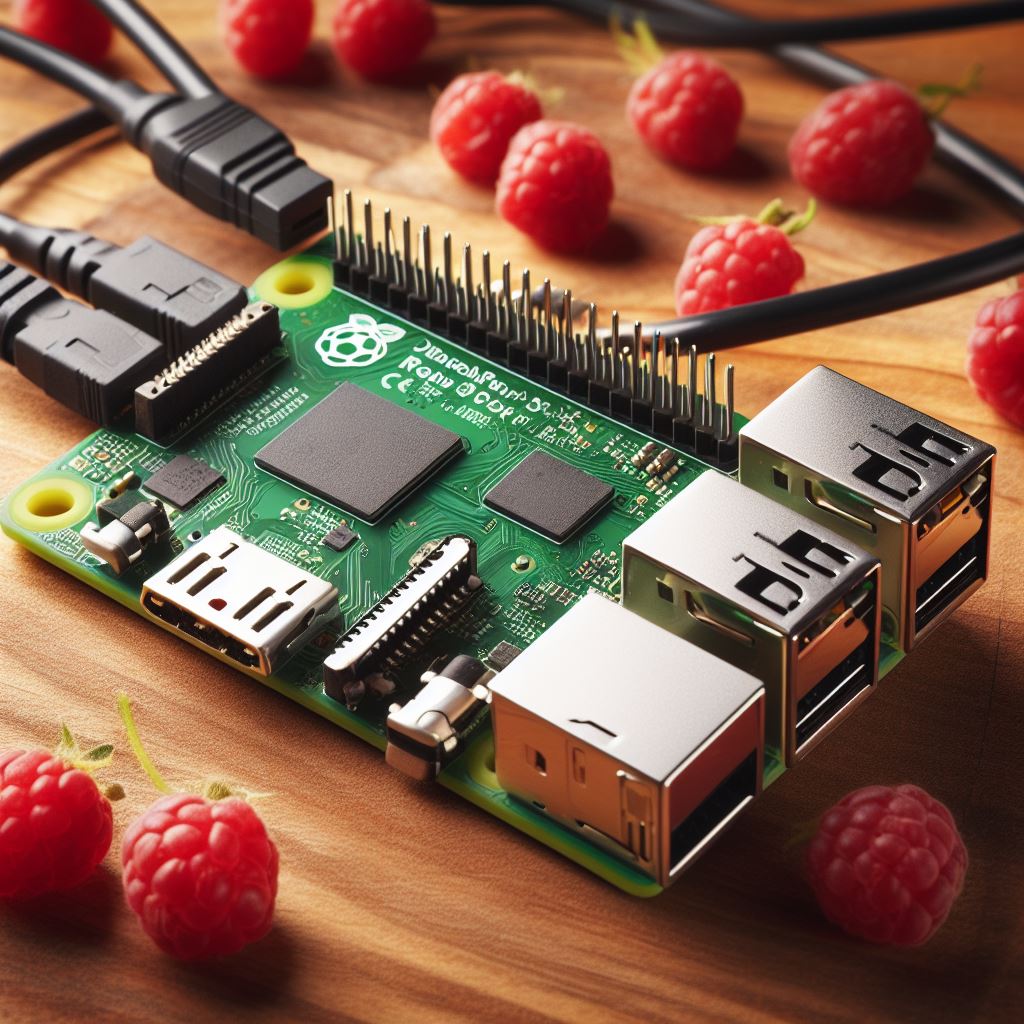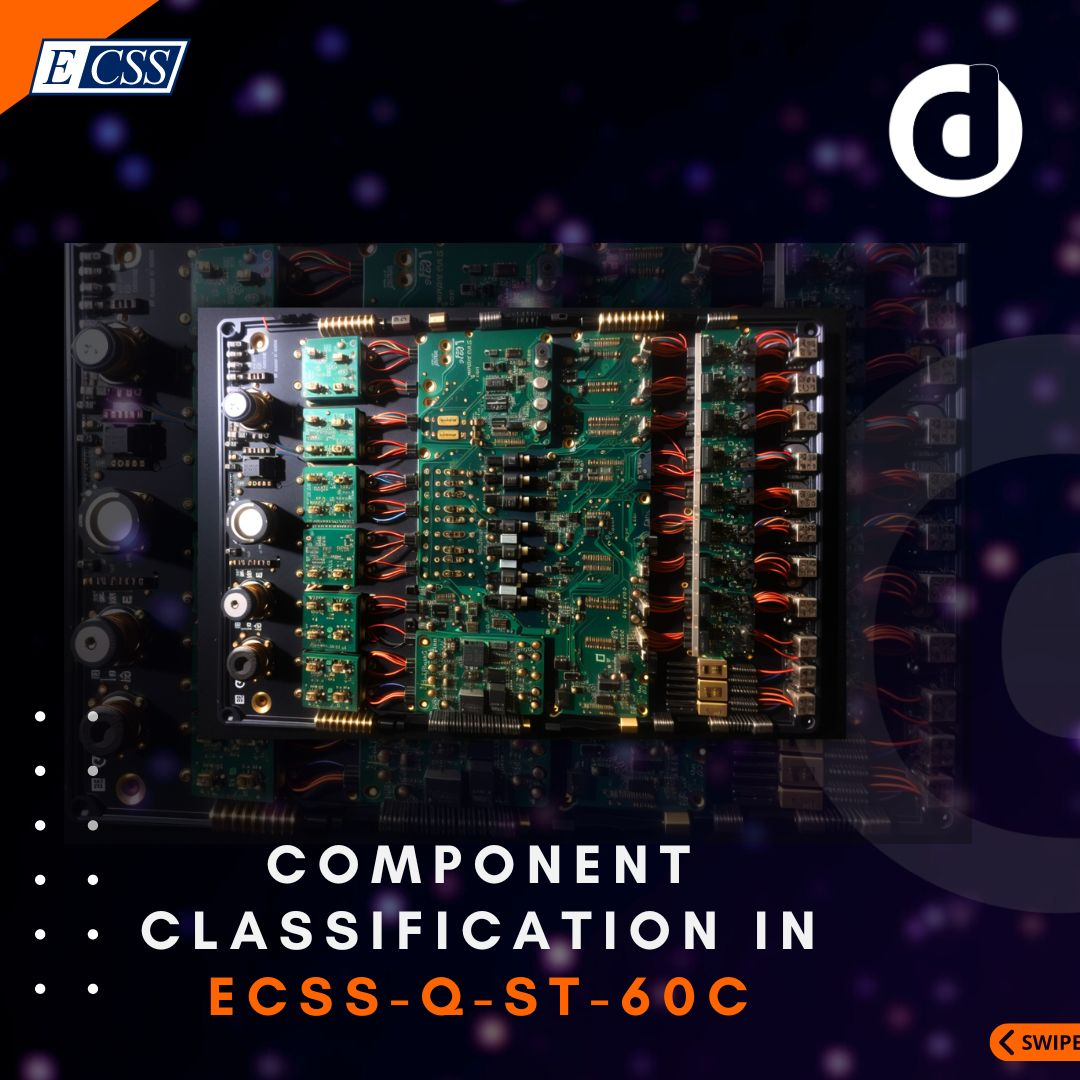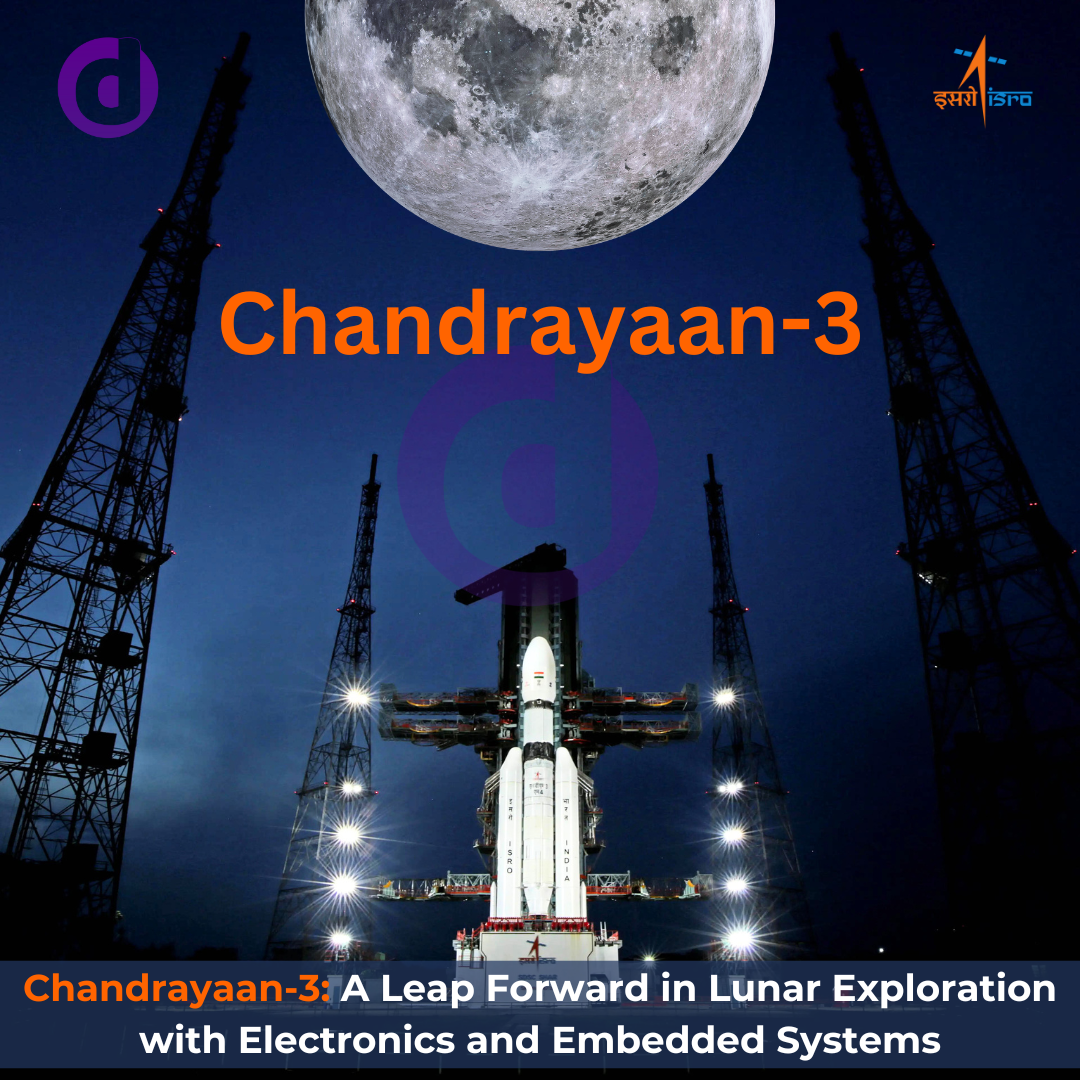 by Rahul Shah
by Rahul Shah Technology
Technology
Unravelling ECSS-Q-ST-60C: Deep Dive into Electronic Component Classification for Space Missions with a Spotlight on Chandrayaan 3
Introduction
In the unforgiving vastness of space, every detail matters. The intricate ballet of space exploration is predicated on an array of electronic components that must perform consistently under extreme conditions. The need for reliability and robust performance has led to the development of stringent standards to govern the quality of these components. One such standard is the ECSS-Q-ST-60C, which plays a vital role in enhancing the safety and success of space missions.
In this article, we embark on a journey to decode the ECSS-Q-ST-60C standard. We'll unravel its importance, dive deep into its various sections, and learn how it classifies electronic components based on the specific requirements of different types of space missions.
What is ECSS-Q-ST-60C?
The ECSS-Q-ST-60C is a comprehensive standard developed by the European Cooperation for Space Standardization (ECSS). It sets forth the principles and requirements for the procurement, selection, control, and use of Electrical, Electronic, and Electromechanical (EEE) components in all space projects.
Given the harsh and demanding environments encountered in space, electronic components must meet high reliability and quality standards. The ECSS-Q-ST-60C serves this need by ensuring that each component used in space can withstand the associated stresses and perform as expected throughout the mission life.
ECSS-Q-ST-60C's impact extends to all parties involved in space missions, whether they are system integrators, designers, or component manufacturers and suppliers. By adhering to this standard, these parties ensure their components are space-qualified and fit for purpose.
The standard is not just a guideline; it's an assurance of quality and reliability. It provides the confidence that the components used will perform as required, contributing to the success of space missions and the safety of astronauts.
Exploring the Sections of ECSS-Q-ST-60C
The ECSS-Q-ST-60C is divided into several sections, each dealing with a specific aspect of electronic components procurement and management for space applications. A breakdown of the main sections gives us an understanding of the comprehensive nature of this standard.
Scope: This section outlines the objective and coverage of the standard. It stipulates that the standard applies to all parties involved in space projects at all levels - from the system level down to the parts level.
Normative References: This part of the standard lists all the other documents and standards that have a significant influence on ECSS-Q-ST-60C. These normative references form the technical foundation upon which the standard is based.
Terms, Definitions and Abbreviated Terms: In order to avoid confusion and ensure a common language for all users of the standard, this section provides definitions for terms and abbreviations used throughout the document.
Principles: This section is the backbone of the standard. It outlines the principles that guide the procurement and use of EEE components in space missions. The importance of a risk-based approach, the concept of criticality, and the need for control at all stages of component lifecycle are emphasized.
Requirements: This is the crux of the standard, detailing the specific requirements for each class of components. It offers comprehensive guidelines on component classification, selection, procurement, and control.
A deep dive into the requirements section and its sub-sections will provide further insights into the different aspects of component handling. This includes procurement strategies, component selection, component control, radiation assurance, handling, storage and transportation, non-conformance control and disposition, data requirements, and maintenance protocols.
By following these requirements, space projects can ensure they procure and use components that meet the necessary standards of quality and reliability, thereby enhancing the likelihood of mission success.
In the next part of this series, we will delve into the heart of the ECSS-Q-ST-60C standard: its classification system. Stay tuned as we dissect each class and its criteria and look at real-world examples of passive and active components, and their classification. We'll also focus on how this standard is applied in practical scenarios, such as India's Chandrayaan 3 lunar exploration mission.
Through understanding ECSS-Q-ST-60C, we are not just delving into a technical standard. We are exploring a cornerstone of modern space exploration, an element that plays a vital role in our quest to uncover the secrets of the cosmos.
Component Classification: Understanding Class 1, Class 2, and Class 3
At the heart of the ECSS-Q-ST-60C standard lies its classification system, a scheme that distinguishes electronic components into three classes—Class 1, Class 2, and Class 3. Each class has distinct quality assurance levels and test requirements. The mission's criticality, duration, and the specific function of the component within the system all factor into determining the appropriate class.
Class 1 Components represent the highest level of quality and reliability, suitable for critical and long-duration space missions where component failure could lead to catastrophic mission failure. These components must undergo stringent selection and qualification processes, including lot acceptance tests, destructive physical analysis, and radiation testing. Full traceability is also required, ensuring every component's origin and production history can be tracked.
Class 2 Components are employed in less critical missions or subsystems where component failure may not necessarily lead to a complete mission loss. These components undergo acceptance and radiation testing, but a destructive physical analysis may not be necessary for all Class 2 components. They must maintain traceability, but this is typically at a lot level, rather than the individual component level.
Class 3 Components are typically used in non-critical applications or high-risk, low-cost missions. The failure of these components is not expected to jeopardize the overall mission success. For Class 3, the quality assurance process involves acceptance tests but may not necessitate detailed traceability, destructive physical analysis, or radiation testing.
Case Studies: Classifying Passive and Active Components
Let's explore how these classes apply to various passive and active components in practical scenarios.
Passive components like capacitors, resistors, and inductors play critical roles in a variety of applications, ranging from power regulation to signal filtering. Class 1 capacitors, for instance, might be used in a satellite's power supply unit, where their failure could potentially lead to catastrophic outcomes. On the other hand, a Class 2 resistor might find its place in a less critical subsystem of a short-duration satellite mission.
Active components such as operational amplifiers, transistors, and MOSFETS form the heart of electronic devices, amplifying signals and controlling electric power. A Class 1 operational amplifier could be a part of a vital system such as a deep-space probe's guidance system, where its performance and reliability are absolutely crucial. A Class 3 transistor might be used in a high-risk, low-cost mission where the focus is on testing new technologies rather than ensuring complete mission success.
Spotlight on Chandrayaan 3: Applying ECSS-Q-ST-60C in Real-world Missions
To truly understand the importance of the ECSS-Q-ST-60C standard, it's useful to consider its application in real-world missions. Take for instance Chandrayaan 3, a mission set out by the Indian Space Research Organisation (ISRO) to explore the Moon's south polar region. Given its high scientific value and the mission's criticality, most electronic components used in Chandrayaan 3 would likely fall under Class 1.
The capacitors or inductors used in Chandrayaan 3's power supply or communication systems, for example, would be classified as Class 1 components, subject to stringent testing and inspection processes. Similarly, active components like operational amplifiers or transistors, particularly those used in critical systems like the lunar rover's guidance system, would also be Class 1, given their indispensable role in navigation and communication.
Understanding the application of the ECSS-Q-ST-60C standard in such missions underscores its significance in space exploration. It highlights the importance of component classification in ensuring mission success and mitigating potential risks.
In the next segment of this series, we'll delve into the crucial role of testing in ensuring component reliability. We'll explore the different tests required at the component level and discuss their importance in guaranteeing component performance and mission success.
Whether it's passive components like capacitors and resistors or active components like operational amplifiers and transistors, the ECSS-Q-ST-60C standard ensures they're all up to the task. By adhering to this standard, we're taking a significant step towards unravelling the mysteries of space.
For more updates and insights into space technology standards, stay tuned to our blog and make sure to check out the ECSS-Q-ST-60C standard on the official ECSS website.
Diving Deeper into ECSS-Q-ST-60C: Component Testing, Chandrayaan 3 and the Relevance of Dignifiedme.com
Ensuring Component Reliability: The Role of Testing
At the heart of the ECSS-Q-ST-60C standard lies an unrelenting emphasis on rigorous testing to ensure component reliability. Each class of components—Class 1, Class 2, and Class 3—has specific testing requirements that reflect the mission's criticality, duration, and the component's function within the system.
For Class 1 components, testing involves lot acceptance tests, destructive physical analysis, and radiation testing. This rigorous testing regimen is necessary due to the high-stakes nature of missions these components are used in.
Class 2 components, used in less critical missions, must undergo lot acceptance tests and radiation testing. However, not all Class 2 components require destructive physical analysis. This reflects the relatively lower mission criticality these components are involved in.
For Class 3 components, the testing requirements are somewhat more lenient, typically involving acceptance tests but not necessarily detailed traceability, destructive physical analysis, or radiation testing. This reflects the high-risk, low-cost nature of the missions these components are used for.
In order to understand the importance of these testing requirements, let's delve into what each of these tests entails.
Lot Acceptance Tests assess the quality and reliability of a batch or 'lot' of components. These tests usually involve subjecting a sample of components from the lot to a series of electrical, thermal, and mechanical stress tests.
Destructive Physical Analysis is a process where a component is methodically dissected and examined to validate its internal structure, materials, and construction practices against the applicable specifications. It's an important tool for identifying and mitigating risks associated with component failure.
Radiation Testing is essential for space missions due to the high levels of radiation in space. Components are subjected to radiation and their performance is monitored to determine their tolerance and overall reliability under radiation stress.
These tests ensure that the electronic components used in space missions can withstand the extreme environments they'll encounter and function reliably throughout the mission.
Chandrayaan 3: Unveiling the Practical Application of ECSS-Q-ST-60C
Let's turn our attention back to the Chandrayaan 3 mission to illustrate the practical application of ECSS-Q-ST-60C. Most electronic components used in Chandrayaan 3 are likely to be classified as Class 1, given the mission's high scientific value and criticality.
These components, whether they're passive (like capacitors or inductors) or active (like operational amplifiers or transistors), would have undergone a stringent selection and qualification process as per the Class 1 requirements of ECSS-Q-ST-60C. This would include comprehensive testing, including lot acceptance tests, destructive physical analysis, and radiation testing, to ensure their ability to withstand the harsh lunar environment and perform optimally throughout the mission.
The Relevance of Dignifiedme.com
As we uncover the complexities of the ECSS-Q-ST-60C standard and its vital role in space missions, it's important to acknowledge the platforms that facilitate the dissemination of such knowledge. Websites like Dignifiedme.com play an integral role in making complex topics accessible to a broad audience.
Dignifiedme.com is committed to providing insightful and in-depth content on a wide range of topics, empowering individuals with the knowledge they need to understand the world better. Whether you're a seasoned space enthusiast or someone new to the field, Dignifiedme.com provides a platform for you to explore and learn about various topics, including the intricacies of space technology standards like ECSS-Q-ST-60C.
With articles that offer a detailed explanation of complex subjects, Dignifiedme.com is your trusted source for enriching your understanding of the world around you. The platform not only covers a wide spectrum of subjects but also breaks them down in a way that's easy to understand, making learning an enjoyable experience.
As we continue to advance in our exploration of space, standards like ECSS-Q-ST-60C will remain an integral part of the journey. Through platforms like Dignifiedme.com, we hope to bring such complex, fascinating subjects to everyone, encouraging a deeper understanding and appreciation of the marvels of space exploration.
For more updates and in-depth insights into space technology standards and much more, stay tuned to Dignifiedme.com. Keep learning, keep exploring!
Category
Recently posted
Unveiling the Future: The Remarkable Raspberry Pi 5
In a world that thirsts for technological advancements, the Raspberry Pi 5 makes a grand entrance, promising a horizon filled with endless possibilities. Its launch is more than just a milestone; it's a leap into a future where barriers to technological innovation are minimized.
The Raspberry Pi 5 is not merely a successor to its predecessor; it's a revolution in micr...
Learn moreComponent Classification in ECSS-Q-ST-60C
Introduction: ECSS-Q-ST-60C Rev. 3 and Its Emphasis on Components
The space industry's very nature demands rigorous standards to ensure safety, reliability, and mission success. ECSS-Q-ST-60C Rev. 3, as formulated by the ECSS Secretariat and associated European space agencies, underscores this by placing a strong emphasis on Electrical, Electronic, and Electromechanical (EEE) components. These components, foundation...
Learn moreChandrayaan-3: A Leap Forward in Lunar Exploration with Electronics and Embedded Systems
Introduction
The Indian Space Research Organisation (ISRO) continues its ambitious journey into space with the upcoming Chandrayaan-3 mission. As ISRO's third lunar exploration mission, Chandrayaan-3 is set to follow the path of its predecessors, Chandrayaan-1 and Chandrayaan-2, with the aim of making new strides in lunar exploration. This mission comes as a testament to ISRO's commitment to overcoming the challenges faced during Cha...
Learn moreECSS-Q-ST-60C: An Essential Guide for Electronics Engineers in Space Technology
Introduction
As we push the boundaries of technology and explore the farthest reaches of space, we recognize the importance of having rigorous standards. These standards ensure the safety, reliability, and success of our space missions. In the world of Electrical, Electronic, and Electromechanical (EEE) components used in space systems, one such critical standard is ECSS-Q-ST-60C, issued by the European Cooperation for Space Standard...
Learn moreUnravelling ECSS-Q-ST-60C: Deep Dive into Electronic Component Classification for Space Missions with a Spotlight on Chandrayaan 3
Introduction
In the unforgiving vastness of space, every detail matters. The intricate ballet of space exploration is predicated on an array of electronic components that must perform consistently under extreme conditions. The need for reliability and robust performance has led to the development of stringent standards to govern the quality of these components. One such standard is the ECSS-Q-ST-60C, which plays a v...
Learn moreGet recognised by writing an article on dignifiedme blog. Send your articles to support@dignifiedme.com. If it complies with dignifiedme standard then you can see your article on this page very soon!
Connect with your next great hire today!
Risk-free hiring made easy
Get Started

 Previous
Previous



